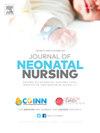维持新生儿体温正常和加温液体
Q2 Nursing
引用次数: 0
摘要
新生儿出生后最重要的适应是努力适应比宫内环境更冷的宫外环境。世界卫生组织建议将新生儿的腋窝体温保持在 36.5 至 37.5 摄氏度之间。防止体温过低和确保体温正常的方法可分为两类:被动加温和主动加温。被动加温是指保持和提高环境温度、去除湿被子、烘干、使用加热毛巾、帽子、衣服和被子,而主动加温方法可定义为加温凝胶床、聚乙烯罩、加温气体和加温液体。关于在新生儿中使用加温静脉输液的研究非常有限。因此,本文旨在指导不同领域的循证研究,包括加温静脉输液、新生儿低体温控制和新生儿护理。本文章由计算机程序翻译,如有差异,请以英文原文为准。
Maintaining normothermia in newborns and warmed fluids
The most important adaptation of the newborn baby after birth is trying to adapt to the extrauterine environment, which is colder than the intrauterine environment. The World Health Organization; it recommends keeping the axillary body temperature in newborns between 36.5 and 37.5 °C. Attempts to prevent hypothermia and ensure normothermia can be divided into two groups; passive heating and active heating. While the passive heating is maintaining and increasing the ambient temperature, removing wet covers, drying, use of heated towels, hats, clothes and covers, active heating metods can be defined as warmed gel beds, polyethylene cover, warmed gases and warmed liquids.
Purpose of warmed intravenous liquids; it is to reduce the contribution of intravenously administered fluids (approximately 25 °C) to hypothermia through convection (heat transfer). There are very limited studies on the use of warmed IV fluids in newborns. Therefore this article is aimed to guide evidence-based studies on different areas including warmed IV liquids, neonatal hypothermia control and neonatal care.
求助全文
通过发布文献求助,成功后即可免费获取论文全文。
去求助
来源期刊

Journal of Neonatal Nursing
Nursing-Pediatrics
CiteScore
2.00
自引率
0.00%
发文量
143
期刊介绍:
Aims & Scope: This is the practical, bimonthly, research-based journal for all professionals concerned with the care of neonates and their families, both in hospital and the community. It aims to support the development of the essential practice, management, education and health promotion skills required by these professionals. The JNN will provide a forum for the exchange of ideas and information between the range of professionals working in this field; promote cooperation between these professionals; facilitate partnership care with families; provide information and informed opinion; promote innovation and change in the care of neonates and their families; and provide an education resource for this important rapidly developing field.
 求助内容:
求助内容: 应助结果提醒方式:
应助结果提醒方式:


